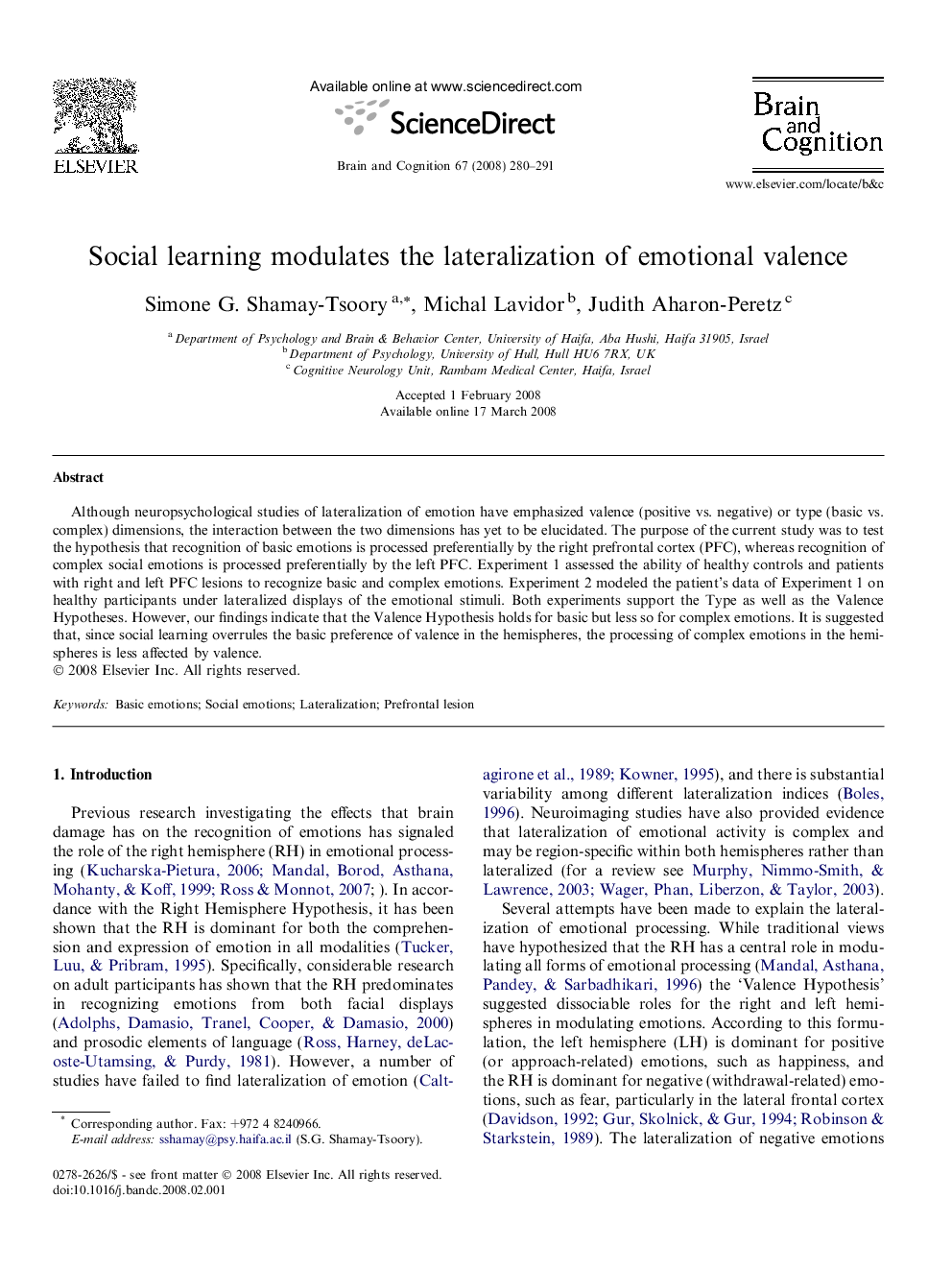| Article ID | Journal | Published Year | Pages | File Type |
|---|---|---|---|---|
| 924500 | Brain and Cognition | 2008 | 12 Pages |
Although neuropsychological studies of lateralization of emotion have emphasized valence (positive vs. negative) or type (basic vs. complex) dimensions, the interaction between the two dimensions has yet to be elucidated. The purpose of the current study was to test the hypothesis that recognition of basic emotions is processed preferentially by the right prefrontal cortex (PFC), whereas recognition of complex social emotions is processed preferentially by the left PFC. Experiment 1 assessed the ability of healthy controls and patients with right and left PFC lesions to recognize basic and complex emotions. Experiment 2 modeled the patient’s data of Experiment 1 on healthy participants under lateralized displays of the emotional stimuli. Both experiments support the Type as well as the Valence Hypotheses. However, our findings indicate that the Valence Hypothesis holds for basic but less so for complex emotions. It is suggested that, since social learning overrules the basic preference of valence in the hemispheres, the processing of complex emotions in the hemispheres is less affected by valence.
